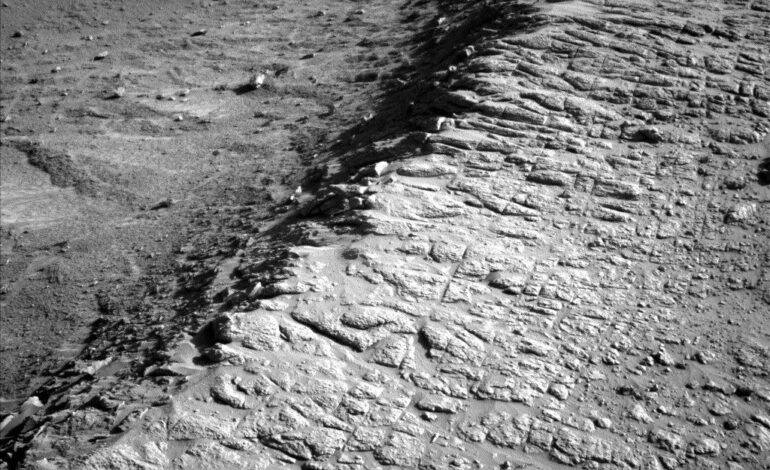Curiosity Rover Captures Stunning Images as it Explores Mars Ridge

NASA’s Curiosity rover recently captured striking images while parked on a ridge overlooking a topographic feature known as the “Thumb.” On August 21, 2025, the rover utilized its Left Navigation Camera to photograph the surrounding terrain, preparing for exploration of this intriguing area in the coming week. This image was taken on Sol 4636, which marks the 4,636th Martian day of the Mars Science Laboratory mission.
Curiosity’s current location is a significant vantage point as it continues its investigation of unique geological formations. After departing from an area referred to as “Río Frío,” the rover is now positioned to characterize the ridge before descending into the Thumb. The mission team planned a comprehensive set of scientific activities over the next few days, making use of ample power and time available for exploration.
Scientific Activities Planned for Upcoming Days
The upcoming weekend is packed with scientific observations aimed at enhancing our understanding of the region. Curiosity will focus on the boxwork structures that have dominated its studies for several months. The rover will take Mastcam images of several designated targets, including “Wallatiri,” “Wallatiri 2,” “Mojo,” “Samaipata,” “Fort Samaipata,” and “Río Lluta.” Furthermore, the ChemCam instrument will perform Laser Induced Breakdown Spectroscopy (LIBS) measurements at the Samaipata and Fort Samaipata targets.
Additionally, the rover’s MAHLI camera will conduct detailed imaging of Samaipata, alongside observations of the targets “Vitichi” and “Tartagalita,” which will also be analyzed by APXS for compositional data. Curiosity will also revisit previously recorded data, documenting the ChemCam AEGIS target from a previous plan and capturing further images of the “Mishe Mokwa” butte.
One of the highlights of this mission phase includes creating a large 44-image mosaic of the northern crater rim. This ambitious project takes advantage of the low dust levels currently present in the Martian atmosphere, allowing for clearer imaging.
Atmospheric Observations and Future Plans
In addition to geological studies, a series of atmospheric observations will be conducted. Curiosity’s Navcams will focus on capturing a dust-devil movie, a dust-devil survey, and multiple cloud movies, including two line-of-sight observations of the northern crater rim. Mastcam will also track atmospheric dust levels by measuring tau.
Despite the extensive plan, the mission team decided to remain in the same area for further investigation. The rover’s next move involves a short drive of approximately 2 meters (around 6.6 feet), allowing the team to continue its exploration of the ridge on the following Monday.
As Curiosity presses on with its mission, these images and data will offer critical insights into the geological history of Mars and contribute to our understanding of the planet’s environment. For those interested in following Curiosity’s journey, updates can be found on NASA’s dedicated mission pages.






